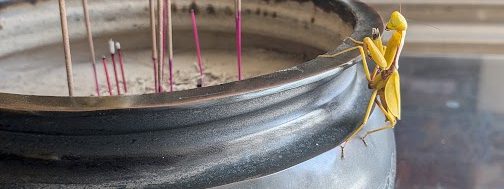
Devotional Creatures: Amphibians, Bugs, and Creepy Crawlies in Chinese Religions
Daniel Burton-Rose, Wenzhou-Kean University; Stuart Young, Bucknell University
December 2, 2024 · 4:30 pm—6:00 pm · 202 Jones
East Asian Studies Program

From the silkworms that serve as a synecdoche for civilization itself to the locusts that periodically ravage agricultural society, the multifarious little creatures known as chong 虫/蟲 contributed to the development of Chinese religious teachings, practices, and material cultures in myriad ways. In today’s lecture the editors of the first anthology to focus on chong in Chinese Religions address the challenges and opportunities of combining inquiries into Buddhism, Confucianism, Daoism and popular religions with Animal Studies and Environmental History. Of particular concern is what centering chong contributes to the growing body of scholarship seeking to decenter anthropocentric perspectives. Such works often use life sciences and (neo-)materialism to access non-human creatures. What happens, the editors ask, when the “more-than-human” includes silkworm deities and body worms that report sins to Heaven? The answer lies, in part, in a materialist conception of religion imaginaries and the conditions that give birth to them. In contrast to the emphasis in existing scholarship on domesticating, breeding, consuming, harvesting, sacrificing, exterminating, categorizing, and symbolically appropriating non-human animals, the editors emphasize the way in which chong have created the conditions in which Chinese civilization and religious lifeways have unfolded.















